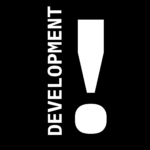In the words of indie-rock band Cursive: “Art is hard”. A maelstrom of abstract concepts, refined palettes, unorthodox patterns, and the challenge of blending them all into a symphony of visual appeal.
For organizations needing to get their products to market as quickly as possible, the transition from design to development can be the bottleneck that slows down this high-speed train. The tug-of-war between the free-flowing creativity of design and the structural precision of development often leads to missed deadlines, endless revisions, and, worse, uninspiring final products.
As if art wasn’t hard enough, right?
But there is hope in this maze; in this era where speed is currency, how will your organization handle this challenge?
The art of design; or: art is hard
Designers are artists at heart, crafting user experiences led by intuition, empathy, and experience-centric aesthetics, they’re using Figma to design beautiful things. On the flip side, developers translate this abstract creativity into functional, tangible applications.
This dichotomy, for many, this marriage is a union where each discipline respects the other’s principles, yet retains its distinct approach. The convergence can be seamless, or clash outright.
Balancing play, creativity, and technical capacity
Design is not all serious and technical. Design is about play and exploration, of bold strokes and whispered nuances.
Art, as Cursive would have us believe, is hard. And they’re right. But, much like a beautifully composed song or a brilliantly written novel, the beauty of design lies not just in the final product, but also in the intricate and often challenging process that leads up to it. And, that is the real art of design.
The Science of Development
Developers wrestle with algorithms, databases, servers, APIs, and technical components that breathe life into a design. This is where art becomes science and where creativity meets code.
It’s not just about coding. Coding is the language, but development is the conversation. Developers must understand the problems they are trying to solve, be familiar with the tools at their disposal, and devise a strategy to build a functional, efficient solution.

Development is literally a science: computer science
Surely, it’s a science – a precise, methodical discipline that leaves little room for error. But akin to art, it requires creativity, foresight, and a certain ability to think outside the proverbial box.
If design can be seen as sketching the blueprint, development is the act of building the structure brick by brick, or in this case, line by line of code. The developer’s canvas is a blank screen and their tools are the myriad programming languages at their disposal.
Successful development requires a meticulous approach, coupling a precise understanding of the design intent with an astute application of coding principles. Even with an existing development workflow for in-house development, the expertise may not exist in the technologies necessary to serve a performant WordPress website today, and no organization wants a slow WordPress website.
Understanding the Design-Development Gap
Designers and developers are like two sides of the same coin, yet they operate on different wavelengths. Designers dwell in a world of imagination, aesthetics, and user experience, where an idea’s beauty, usability, and emotional resonance take precedence. Their realm is one of colors, lines, shapes, and textures.
A design might look aesthetically pleasing, but if it doesn’t take into account the technical constraints and capabilities of the platform it will be built on, it risks becoming unworkable in development. On the flip side, if developers aren’t given a clear understanding of the designer’s vision, they may deliver a product that functions perfectly but lacks the compelling user experience the designer had intended.
On the other hand, developers live in a world of logic, functionality, and coding. They are more concerned with how the pieces of the puzzle fit together to create a seamless user journey.
This is the Design-Development Gap.
A yawning chasm that often hampers an organization’s ability to smoothly transition from concept to a working product or service. And as we’ll soon explore, for organizations under pressure to implement and iterate quickly, this gap can morph into a vast canyon, swallowing time, resources, and morale.
In the harmonious world we all dream of, designers and developers would be in perfect sync. Designs would be as practical as they are visually captivating, and developers would decode them effortlessly into tangible products.
The push to iterate faster
As complex as the art of design may be, the translation of those designs into a functioning, market-ready product is often a path fraught with unforeseen hurdles. With a combination of aching creativity, ceaseless innovation, and precise technical expertise, design sets the stage.
While organizations scramble in today’s global market, they require strategies to reduce their time to market (GTM) without compromising on quality.
Outsourcing development squeezes timelines and accentuates focus on core competencies while mitigating lapses that inevitably arise. This disparity is a familiar scene in many organizations.
Designers and developers live in different worlds, with diverging skillsets and distinct mindsets. Your designer is an artist at heart, translating feelings and emotions into visual narratives. Your developer, on the other hand, operates in a realm of logic and precision, transforming these creative concepts into functional code.
Time and resources are not unlimited
This high-pressure environment can lead to rushed designs and subpar development, causing the end product to suffer. There are resources available for teams who require a faster solution to bringing their Figma design to life. When in-house development resources lack the specific experience and capabilities: extend your team’s capabilities.
For many design teams, a creative concept and final design has been perfected in Figma and is ready to go. It’s not about giving up control, but rather about strategic delegation (an art in itself…). Like a skilled conductor leading an orchestra, organizations can direct their outsourcing partners, ensuring that their vision is translated into reality, note for note, pixel for pixel.
Leading Figma development partner
As the leading Figma to WordPress provider, our own engineers can augment your team with expertise in website development and site architecture: delivering enterprise-scale experiences from a Figma. With engineers and solutions for any platform, your vision can become reality in a matter of days.
With the right outsourcing partner, organizations can channel their energy and focus towards the core aspects of their product, while leveraging the expertise of external developers for efficient implementation.



